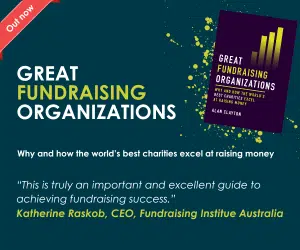Statistical modelling
Statistical modelling is just a way to use information in your donor database to help you predict who is most likely to respond positively to your appeals and who is not. So why does it sound so complicated, asks Peter Wylie.
Author: Peter Wylie
Dear Dr. Wylie: More and more I’m hearing about how people in fund raising who do a lot of direct mail should be using “statistical modelling.” I have a rough idea of what statistical modelling is all about. But more importantly, why should we be using it?
Advertisement
A little confused
Dear confused: Technically, statistical modelling is complicated and obtuse. Conceptually, it’s simple and straightforward. Conceptually, it’s just a way to use information in your donor database to help you predict who is most likely to respond positively to your appeals and who is not. That’s it. Everything else is details. Important details, but details nonetheless.
And why should you be using it? I see at least four reasons:
- It can make your direct mail appeals far more cost effective.
- It’s relatively inexpensive.
- You know very quickly whether or not it works.
- The direct marketers in the private sector almost ALL do it.
Some details about each reason:
IT CAN MAKE YOUR APPEALS FAR MORE COST EFFECTIVE.
You don’t need me to tell you that direct appeals by mail, phone, smoke signal or whatever are expensive. Just a small percentage increase in the donors who respond positively to your appeals can make all the difference between a campaign that’s a big success versus one you’d rather forget.
An example. Let’s say you have a mailing list of 100 hundred thousand potential donors where you have good reason to believe the return rate on a first appeal will be about 5.5% with a 50% fall off rate for each subsequent appeal. (That is 2.75% on the second appeal, 1.375% on the third appeal, and so on.) Further, experience shows that the average donation you get from those who send in anything is £24. Your mailing and other costs per potential donor are £0.60.
If you do one mailing of a hundred thousand to everyone on the list, you can expect a net gain of £72,000. If you do a second mailing of a hundred thousand, your net gain will be only 6 thousand pounds for a total net gain of £78,000. (If you do a third mailing of a hundred thousand, you will end up with a net loss of £27,000 for that mailing.) Assuming you don’t do a third mailing, your profit per piece mailed will be about £0.40.
Okay. Now let’s assume you’ve done some statistical modelling with your database and are able to divide all donors/prospective donors into deciles (tenths) where the top decile is people who have a 10% likelihood of responding to an appeal and the bottom decile is people who have a 1% likelihood of responding.
You should do the math to check me out, but here’s where the cost effectiveness comes in. Let’s say you mail ten thousand appeals per decile to people in deciles 10 down to 3 in the first mailing and the same number of appeals per decile to people in deciles 10 down to 6 in the second mailing. Your net gain will be a £95,000 versus the £78,000 you would have made had you mailed a 100 thousand appeals to everyone twice. BUT, the really good news is that your profit per piece mailed will be more than £0.72 versus the £0.40 mentioned above. Why such a big difference? One, you haven’t mailed to people in deciles where you would lose money. And two, you’ve only mailed out 130 thousand appeals as opposed to 200 thousand.
STATISTICAL MODELLING IS RELATIVELY INEXPENSIVE
I’m biased; I do this stuff for a living. But I have seen many non-profit organizations waste hundreds of thousands of pounds needlessly appealing to people who will give them little or nothing in return. If they’d been willing to spend a small fraction of those dollars to build a reliable predictive model for donors, there’s no telling the good uses they could have put that money to.
YOU KNOW VERY QUICKLY WHETHER OR NOT STATISTICAL MODELLING WORKS
Statistical modelling is like a golfer’s score for a round of eighteen, or a stock’s performance on the exchange. There’s little BS involved. It either performs or it doesn’t and you get the results almost right away.
THE DIRECT MARKETERS IN THE PRIVATE SECTOR ALL DO STATISTICAL MODELLING
Statistical modelling may be a new kid on the block in the non-profit sector. But it is certainly not a stranger/interloper in the business world. If you have any doubts, ask some of the large donors you’ve gotten to know in the profit-making world who do direct marketing–whether a bank, a credit card outfit, a major bookseller, whatever. They spend enormous amounts on what’s called database marketing where a good chunk of the money goes to building statistical models for who’s gonna buy what, when, and for how much. Those of us in the non-profit world simply can’t afford to ignore this trend.
Peter Wylie holds a doctorate in industrial psychology from Columbia University. He is an expert on how non-profit organizations can do a far more efficient job of fund raising by carefully mining their donor databases. His business phone is (202)332-7571; his e-mail address is pb********@*ol.com.



